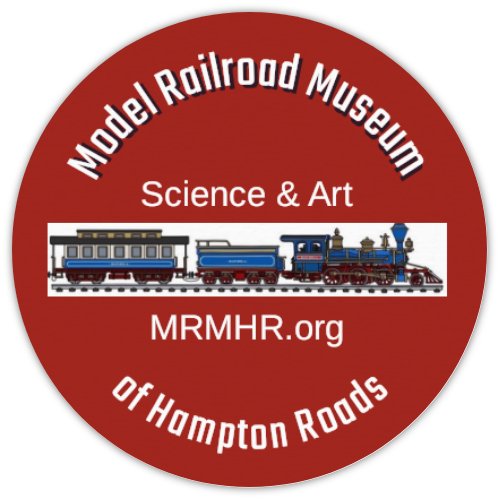Making Tracks
August 2024
Are you a Model Railroader?
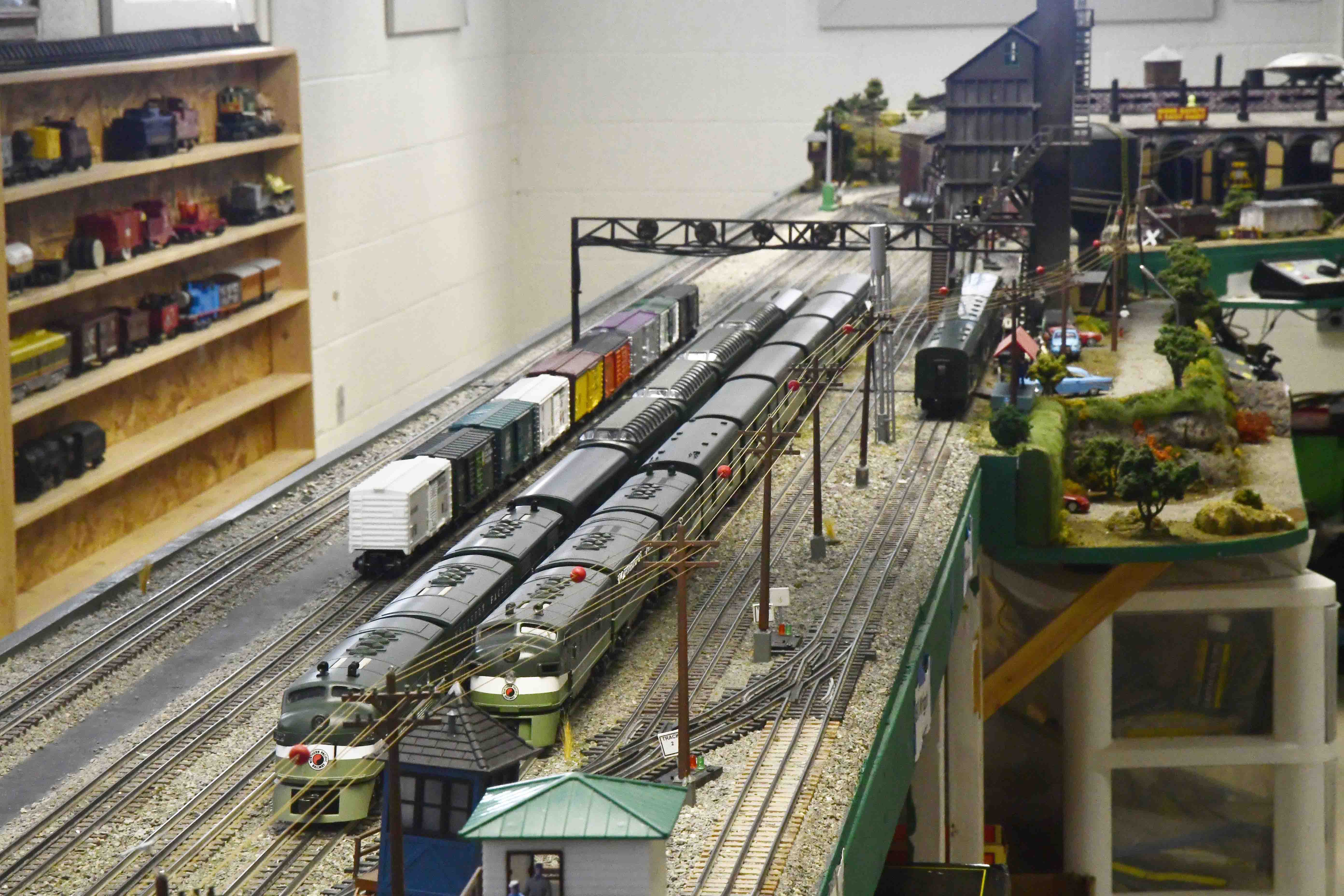 Tidewater O Gauge Association
Tidewater O Gauge AssociationMaking Tracks August 2024
Contents:
- Model Railroad Museum of Hampton Roads Grand Opening!
- Birth of Virginia Beach, Part 13, by Warren Leister
- Collecting Wooden Track Trains, by Dave Pecota
- Links to articles on Model Railroad wiring and to the latest issue of The Local
- Video of the Month
Model Railroad Museum - Grand Opening in November!!
Diligence, perseverance, and donations have paid off! We have found a location in Norfolk, VA on the third floor of MacArthur Mall at 300 Monticello Ave. Our Grand Opening is scheduled for November 2024 starting with a spectacular Holiday Display! Exact date to be announced. We intend to have layouts of all the major scales, including G, O, S, HO, N, and Z scales. In addition we will have Legos trains, vintage wooden trains, an educational section, history of railroads, library, videos, student-built layouts, a gift shop, a loco repair shop, a play area with wooden trains and battery-operated train sets for kids, and a small coffee shop. This will be an unique museum like you have never seen before. Admission will be Free for everyone throughout the Holidays. If you are a model railroader and wish to sign up as a member or volunteer, send an email to secretary@mrmhr.org. Also, please remember, as a non-profit (501c3) organization, we are entirely dependent on donations, and sponsorships, all of which are tax deductible. Every donation helps - even little ones. 100% of every dollar goes into development and maintenance of the Museum. There are no administrative costs. We are all volunteers who donate to the museum ourselves. We receive no benefit for building and operating the museum other than the pleasure of seeing the enjoyment on the faces of our visitors.
Birth of Virginia Beach - Part 13
By Historian Warren Leister
{Author's notes are in brackets and italics}
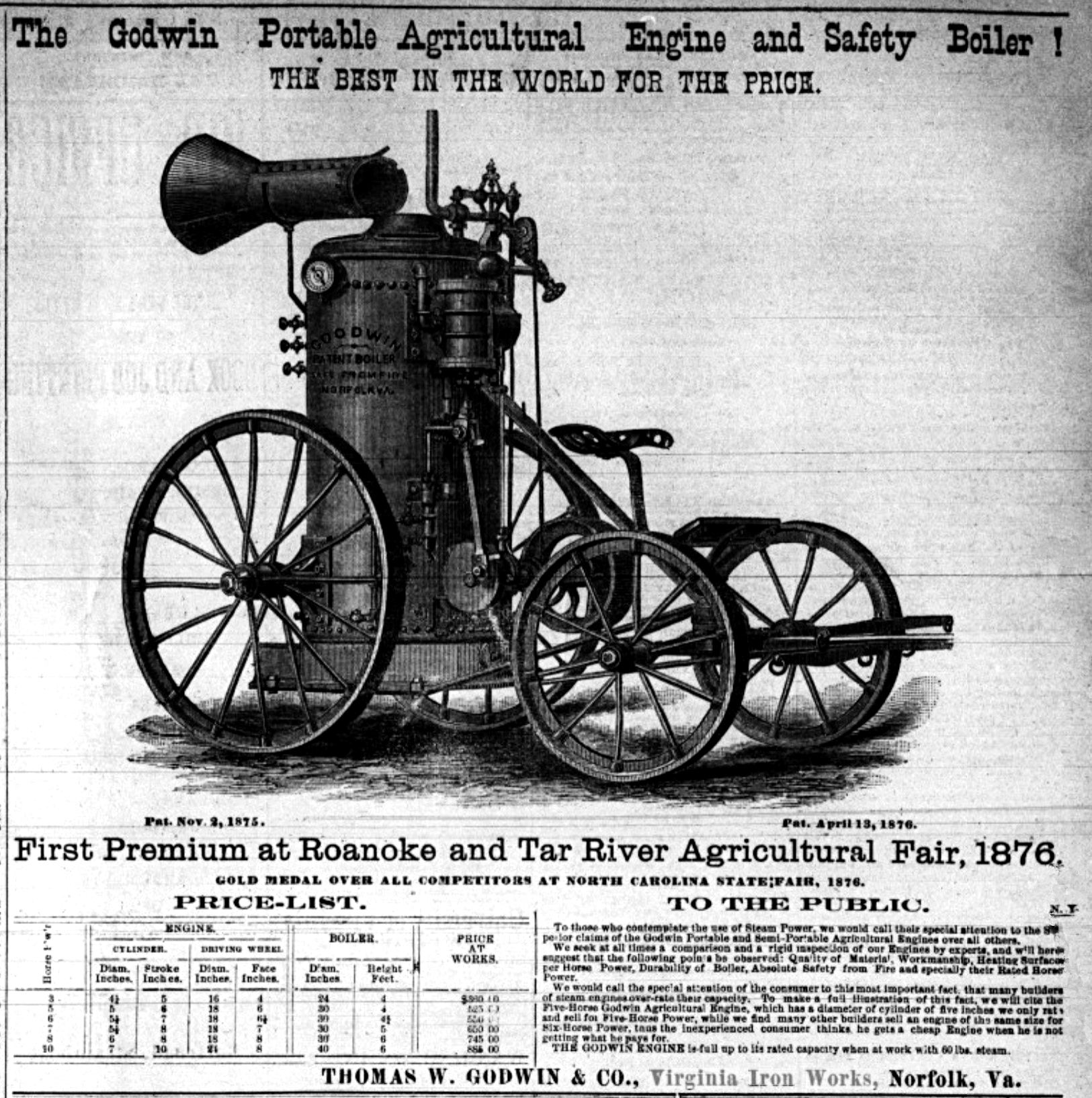
A Continuing Series: Part 13 - Exclusively Written for Making Tracks August 2024:
A failed first Princess Anne Railroad attempt, resort fire, new turnpike, and a new railroad with a new locomotive!
From the
Norfolk Landmark Public Ledger dated March 7, 1876 titled "The Norfolk and
Princess Anne Railroad," "A meeting of the corporators of the Norfolk
and Princess Anne Railroad was held in the office of the Dismal Swamp Canal Company
on Saturday, March 4th, 1876. William H. Barroughs, William B. Rodgers, Dr. A.
G. Tebault Bennett Land, Sr., and J. H. Overstreet, S. E. Fitch, Esq. of New
Jersey, General C. J. Barton, and others were also in attendance."
"On motion, William B. Rogers was
called to the chair."
"General C. J. Barton, Colonel
George E. Garrison, and W. S. Forrest were, on motion, associated with the
corporators."
"W. S. Forrest was elected
Secretary. The object of the meeting was fully explained by the chairman and by
Judge Burroughs."
"Mr. Fitch addressed the meeting
very satisfactorily, and gave much valuable information in regard to the route,
construction, and prospects of the proposed road, and of the management of
railroads generally. His remarks were very favorable and encouraging in regard
to the enterprise under consideration. He concluded by stating that his
confidence in its complete success was such that, with the right of way
secured, he would furnish all the capital required to build the road and
commence the work within thirty days. He urged, however, that the people of the
cities of Norfolk and Portsmouth, and of the counties of Princess Anne and
Norfolk, promptly take the matter in hand, subscribe to the stock of the
company, and complete without unnecessary delay an improvement of so great
importance to the agricultural and commercial interests of this section of the
State, and promised to co-operate with them."
"The chairman named the following
gentlemen as canvassers to obtain subscribers to the stock of the company :
Princess Anne County—Dr. Tebault Colonel George G. Garrison, John H Overstreet
and Walter H. Coke. Norfolk County—Peter Hancock and Thomas R. Ballentine.
Portsmouth---Washington Reed and James G. Bain. Norfolk—Judge Burroughs and
Andrew S. Martin.”
“On motion of Judge Burroughs, the
chairman was added to the canvassers for Norfolk city.”
“The following resolutions were offered
and passed unanimously:”
“Resolved, That the western terminus of
the proposed railroad shall be at Atlantic City {torn down long ago and the
site is now a part of Norfolk, Va located just southeast of Fort Norfolk on the
Elizabeth River between Fort Norfolk and the opening of the Hague at the
Elizabeth River}, and the eastern terminus at ‘the Hollies’ {the site of
Marshall Jr’s original oceanfront property which is where 17th
street at the oceanfront is today}, on the Atlantic coast, six miles below
Cape Henry lighthouse; that the route shall be as near as practicable to a
direct line between those two points.”
“Resolved, That a branch road to and
beyond Princess Anne Courthouse is a part of the plan in contemplation.”
“On motion, it was unanimously:”
“Resolved, That the thanks of this
meeting be and are hereby tendered to S. E. Fitch, Esq., for the valuable
information which he has rendered on this occasion, and for his liberal offer.”
“Some remarks were offered with regard
to establishing a hotel and watering place on the shore at the eastern terminus
of the road, and to important sources of revenue, after which the meeting
adjourned subject to the call of the chairman.”
“William B. Rogers, Chairman. - W. S.
Forrest, Secretary."
From the Alexandria Gazette dated March 13,
1876 in the left most column page two "A charge having been made against
ex Governor Gilbert C. Walker of having abstracted a package of money
containing $22,500 from the Exchange National Bank of Norfolk, Va., of which
Mr. Walker was formerly President, Marshall Parks a director of the
institution, now in Washington, in a letter replying to A. D, Banks, Secretary
of the Democratic National Committee, says: I was a director in said bank from
its organization in 1868 to 1875, and no such charge was ever intimated or
heard of by me or any other director of officer of said bank.”
As reported in the Norfolk Virginian on
April, 13, 1876 in an article titled “Destruction by Fire of the Vue de L’eau
Hotel,” that apparently there were repeated attempts at arson of which a good
number were initially not successful, as the fires were spotted and promptly
put out. An insurance company involved even authorized the hiring of an extra
watchman. Finally a last attempt succeeded after 2 am one night when the two
watchmen were temporarily distracted away from the main hotel building to a
nearby stable and when they returned after a short time a fire that had been
started that they were then too late to be able to put out! Though Marshall Jr.
had been an incorporator of the company when it was organized in 1870 and then
the resort was built and opened in 1872, he apparently wasn’t still directly
involved by the time of the fire. A couple, a Charles and Elizabeth Stokely,
were arrested and prosecuted for the arson, but the evidence presented wasn’t
conclusive enough to obtain a conviction and they were acquitted as best it can
be determined from accounts in the Norfolk Virginian newspaper in early May,
1876.
Directly below and in the same column
as the previous article on the same day in the same newspaper citing about the
destruction by fire of the Vue de L’eau Hotel was a report of a meeting of a
continued attempt to better organize the “Norfolk and Princess Anne Railroad
Company.” Attempts to incorporate such a railroad apparently began in the
legislative session in Richmond in 1871 where it failed and then it was
reattempted in 1872 and apparently failed yet again. As far as we know today.
Marshall Jr. was not directly involved in these attempts as a partner or
officer to the best of our current knowledge and is not listed in any reference
to the organizers. However, since it was supposed to terminate at what we know
at a later time was his property known as the Hollies at the oceanfront, it’s
clear that he would have been aware of it and likely would have been involved
in the building of any new hotel or other resort facilities that might would
have been erected there, but weren’t. This railroad project ultimately was
unsuccessful, though it was a precursor to Marshall Jr’s later successful
“Norfolk and Virginia Beach Railroad and Improvement Company” which is still
years away at the time of this article in 1876.
During this same period in the 1870s, a
similar effort was being made to incorporate and organize a “Norfolk and
Princess Anne Turnpike Company.” This effort ultimately succeeded in creating
badly needed improvement to Princess Anne road from outskirts of Norfolk at
that time to Kempsville, but didn’t go any further. This road had previously
been maintained in quite poor condition as evidenced in the following quote
from an article titled “The Princess Anne Road” in the Norfolk Virginian on May
6, 1873 where it is described as follows: ”From time immemorial the above road
had been considered the ‘worst in the world,’ and we have often vented our
spleen in abuse of its chronically wretched condition… it has been for so long
the shame of Norfolk.”
From the Norfolk Landmark dated January
19, 1877 titled "A New Railroad," "Messrs. Thomas W. Godwin
& Co. {aka Virginia Iron Works, this firm was originally founded by
Thomas W. Godwin in Norfolk in 1866 and according to an advertisement February
19th, 1976 they manufacture stationary and marine steam engines,
prior to starting Virginia Iron Works Thomas was considered one of the best
master mechanics in the South and after the Civil War he was put in charge of
the Government Iron Works located in Norfolk prior to Virginia Iron Works},
of this city, have just completed a thirty-horse power locomotive for Messrs.
Baird & Roper, which has been shipped to their extensive works at North
Landing, Norfolk county, Virginia. It is designed for their new railroad
extending from North Landing to Mount Pleasant, in the same county, a distance
of seven miles. The engine has two cylinders each eight inches in diameter,
with sixteen-inch stroke The driving wheels are thirty inches in
diameter." And from the Norfolk Virginian dated January 19, 1877 titled
“Enterprising Firm,” “… It {the locomotive} will be used to haul logs
and wood from the timber lands along the road to the mill {known to be a saw
mill and a lumber yard} at North Landing.”
End of Part 13
This concludes “Birth of Virginia Beach Part 13” the next installment,
Part 14, will be published in September, 2024.
Collecting Wooden Track Trains
By Dave Pecota
Exclusively Written for Making Tracks August 2024.
Collecting Wooden Track Trains
My personal journey into the world of wooden track trains started when I was a teenager. (I never had any as a child.) I often assisted at my parent’s kindergarten Sunday School class at our church. An incredibly shy girl came to our class one Sunday, and just sat alone silently in a corner of the room. I decided to drag over a large box filled with donated wooden “Snap Trains” and started building a layout near her. I motioned her over for help. Haltingly she came over, and started to pull trains and track out of the box. Within a few minutes, she became totally immersed in building a winding layout and pushing the little trains around the track. Over a period of several Sundays, she began to speak and socialize with other children as they joined her “playing trains”. I was amazed at the power of these trains to unite children in play, which is why I remembered this all so vividly.
Years later, as a parent with a young son with developmental issues, wooden track trains once again “came to the rescue”. For still undiagnosed reasons my son has never been able to speak ... not a single word in 37 years. He didn’t learn to walk until he was 5. At that time, his doctors and educators were unsure whether he would be able to develop the skills necessary to read and write. He loved trains, so I got him wooden track train sets, train-related videos and his own TV to watch his hero, Thomas the Tank Engine.
When he started using his crayons and scrap paper to scribble lists of Thomas & Friends locomotives and “real” train numbers from the videos he watched, we knew he had the skills to advance his education. We were among the first families to purchase the rather pricey Thomas & Friends wooden railway sets when they were introduced in late 1992. For many years, everywhere HE went, a gym bag full of trains and track went along.
As he got older, his interest shifted to Lionel electric trains, NASCAR racing, and the NBA. His wooden trains were put into storage. When we moved from California to Ohio, the train sets were donated to local schools that had classes for developmentally disabled children. I surmised this was likely the “end of the line” for my connection to toy trains.
However, years later, I saw some rather awesome looking Maxim-Lionel wooden track trains while holiday shopping in late 2006. For “old time’s sake”, I bought a few and placed them on a shelf overlooking my desk. A couple days later, I bought a few more. Out of curiosity, I started researching the history of wooden track trains, which admittedly I knew nothing about. In seemingly “the blink of an eye” … (actually, more than a decade) … I assembled a modest collection of toy trains from 1937 to the present day, including some prototypes that never went into production. I also compiled an archive of related ephemera and authored several articles for magazines and train collector websites.
For most adults, wooden railway collecting is driven by nostalgia … remembrances of childhood experiences and reminders of a simpler but vanishing “analog world”. In addition, some of these trains serve as souvenirs of memorable family journeys or train-related events. Observed data indicates collectors usually focus on either a popular character series like Thomas & Friends … a single brand like BRIO … or a specific time-period like 1940-60.
My personal collecting is in several disparate areas from cameras to toys … always done in conjunction with a life-long interest in the “history of things”. As a result, my wooden train collecting knows no particular boundaries. However, with a rather restricted hobby budget and limited space, I only collect representative examples of the many different makers throughout the 80+ years of wooden railway production. I also embrace trains that other collectors may not consider worthy of collecting or even preserving. But these somewhat forgotten and under-appreciated trains are an integral part of the genre’s long history.
Collecting Thomas & Friends
Undoubtedly, the most popular series for collecting in this genre is the expansive world of Thomas the Tank Engine & Friends. Collections numbering hundreds or even thousands of pieces are not unusual. Collectors who are particularly energized by hunting for past item variations as well as new products, find the Thomas & Friends series very appealing and challenging. Thomas himself has dozens upon dozens of variations, and this does not include other series merchandise ranging from toys of all types and clothing, to books and videos. You will never run out of things to add to your collection.
US-made wooden Thomas & Friends pieces are now among the most difficult items to find in “collectible” condition, particularly with their original packaging. Starting in late 1992, these early pieces were made in relatively small numbers for only about 2 years. The packages are highly prized because they confirm the “made in America” provenance.
Aside from packaging, there are several characteristics that help to differentiate the US-made trains from subsequent overseas production. The US trains have a somewhat primitive appearance, and their quality control was not “highly developed”. Most of these trains were assembled using thick staples on the underside of the chassis. The back sides of the plastic wheels were unmarked, whereas the later Asian-made wheels were often embossed with copyright and/or production dates.
In addition, the tacks securing the disk magnets on US trains were noticeably flat where the couplers connected. From 1994 on, tacks on Asian-made trains have a much more rounded appearance.
After Thomas & Friends series manufacturing shifted to China, detail changes to the designs and paintwork occurred quite often. Adding to more collector confusion, surplus components from US production were shipped to China and intermixed with Asian-made components. Character faces also changed as animation processes evolved for the movie and TV shows. Facial expressions of the same character could change in different sets within the same production year, as well. All these factors result in a dizzying number of train variations, with more being added each year.
“Limited editions” have also been a staple of Thomas series collecting. A metallic paint series and special engines and rolling stock made exclusively for the “Day Out With Thomas” meet & greet events, are examples of relatively low production items that are very popular with Thomas fans.
There are printed catalogs for nearly every year of Thomas & Friends wooden railway production, although it was not unusual to see outdated photos for some individual items. Additionally, yearbook-style publications were printed periodically starting in 1993, showing some of the production highlights for each featured year. However, to my knowledge, no comprehensive multiyear guides with detailed variation data have been released at the time of this writing. Nonetheless, there are several “chat” groups and informational videos on social media that can assist collectors in identifying specific variation details.
Although a relatively large group of Thomas & Friends collectors abandoned the hobby after the infamous toxic paint debacle of 2007 (mentioned in a previous article), the hobby chugged on. Currently, some rarer trains and sets can easily reach into the hundreds of dollars on secondary markets. BRIO-made Thomas & Friends items have also experienced strong resale values in recent years. (If you venture into the realm of rarity collecting, thorough research is highly recommended.) As you might expect, most of the Thomas & Friends trains saw a LOT of play time. As a result, resale values are highly affected by condition.
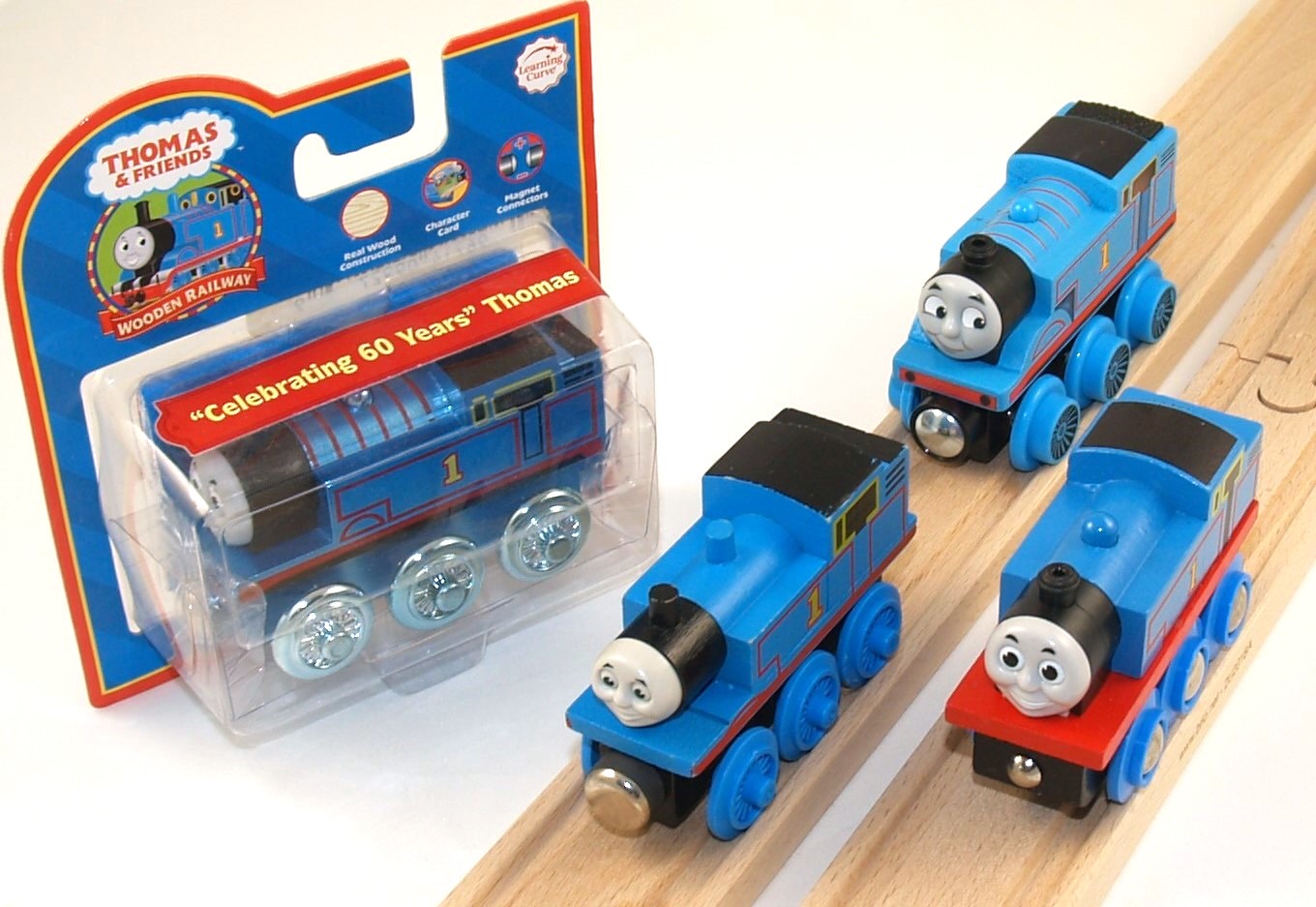 Fig. 1 – Evolution of Thomas the Tank Engine from 1992 (center) to 2024 (top right). Retail sellers Early Leaning Centre, Learning Curve, BRIO and Mattel are represented here.
Fig. 1 – Evolution of Thomas the Tank Engine from 1992 (center) to 2024 (top right). Retail sellers Early Leaning Centre, Learning Curve, BRIO and Mattel are represented here.Collecting BRIO Trains
A smaller (but just as dedicated) group of collectors focus on trains made by the Swedish company BRIO. With BRIO wooden track train production starting in 1958, collectors have a vast array of locomotives, rolling stock and accessories from which to choose. BRIO products are made to very high standards of material, finish and assembly. The company uses 5-8 digit identifier codes for most of their products, which makes research and documentation much quicker and more precise. However, the exact production date for any given piece can difficult to pinpoint. Not all packaging is dated. As with Thomas, collectors can use component characteristics to help confirm the relative age of specific items.
BRIO used rimless wooden wheels on their trains from 1958 to about 1980. In 1981 the company introduced rimless wheels made of hard plastic. However, wooden wheels continued to appear in newly manufactured sets until the inventories of these wheels were depleted. Somewhat larger and more durable rimmed plastic wheels (utilizing metal axles) were introduced in 1986. Once again, the outdated wheels continued to be used in train assembly until the supplies were depleted. I own a “new-in-box” set that came from the factory with both types of wheels being used in the same set.
In addition, BRIO used metal hook-eye train couplers until about 1964, when flat disk magnetic couplers began to appear. At first the disks just “floated” on metal spikes to allow coupling flexibility. However, the company secured a US patent for securing the magnets with round-head tacks in 1974. This system was widely replicated by other manufacturers in various patent-skirting designs, and is the standard for wooden track trains to this day.
Collectors can glean a wealth of information from the many detailed and colorful catalogs BRIO released over the years. Most of the catalogs specific to the wooden railway products can be accessed online from the excellent “BRIO Wooden Railway Guide” posted by veteran BRIO collector John Mechalas. These catalogs are particularly helpful since secondary market sellers not familiar with this wooden train genre often designate almost every wooden train they sell as a “BRIO train”.
BRIO has a myriad of product line themes beyond their basic train sets, including Space, Pirates, Egypt, Theodore Tugboat, Richard Scarry Busytown and a collector favorite, Trains of the World. BRIO designers never hesitated to innovate new concepts such as the Sky Train, Smart Track and Network systems, not all of which were sales successes. The company also developed a wide range of battery-powered locomotives, from simple “economy” models to sophisticated 8-wheel drive “mega-pullers”. BRIO’s un-cataloged promotional and store exclusive items are also highly prized by collectors, but are quite challenging to uncover and document since many do not have a discrete identifier code.
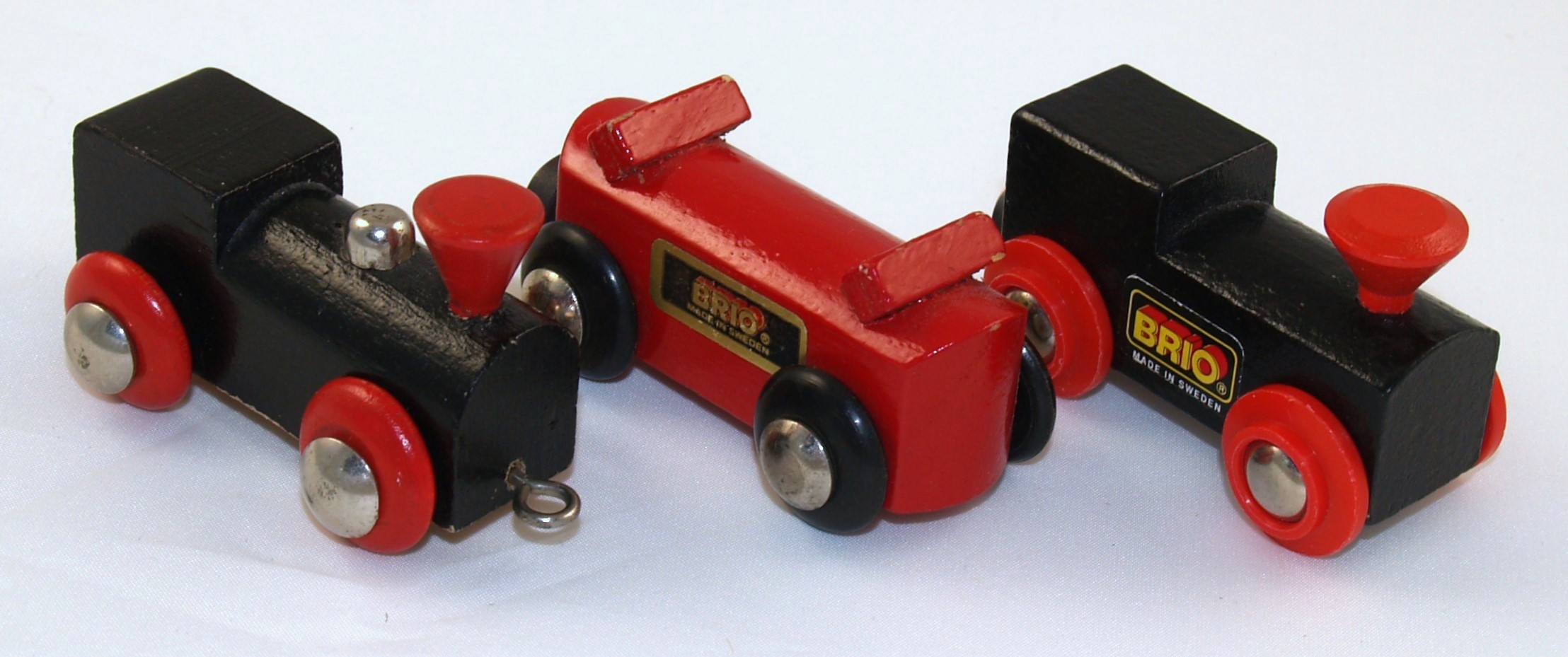 Fig. 2 - BRIO wheel and hub design evolution (left to right) rimless wooden wheels, rimless plastic wheels, rimmed plastic wheels with metal axles.
Fig. 2 - BRIO wheel and hub design evolution (left to right) rimless wooden wheels, rimless plastic wheels, rimmed plastic wheels with metal axles.Collecting Pre 1960’s Trains
Wooden track trains made prior to the 1960’s continue to generate a lot of collector AND operator interest. (I get many inquiries each year regarding the availability of spare parts.) These trains were the pioneers of the genre’, with the Skaneateles Handicrafters trains being the first of the breed in the late 1930’s. Also included in this maker group are brands such Jack Built, Keystone/Lincoln Logs, Eichhorn and Micki Leksaker. These trains naturally have a Mid-Century Modern design aesthetic, an important factor in their continued popularity. In fact, Skaneateles trains were displayed at the NYC Museum of Modern Art (MoMA) from November 1948 through January 1949 in an exhibition of “useful things under $10”. As a testament to their design and manufacturing excellence, you can still find these pre-1960’s trains in fully functional condition 60 to 80 years after their production.
Gallery of Skaneateles, Keystone & Micki Leksaker trains sets:
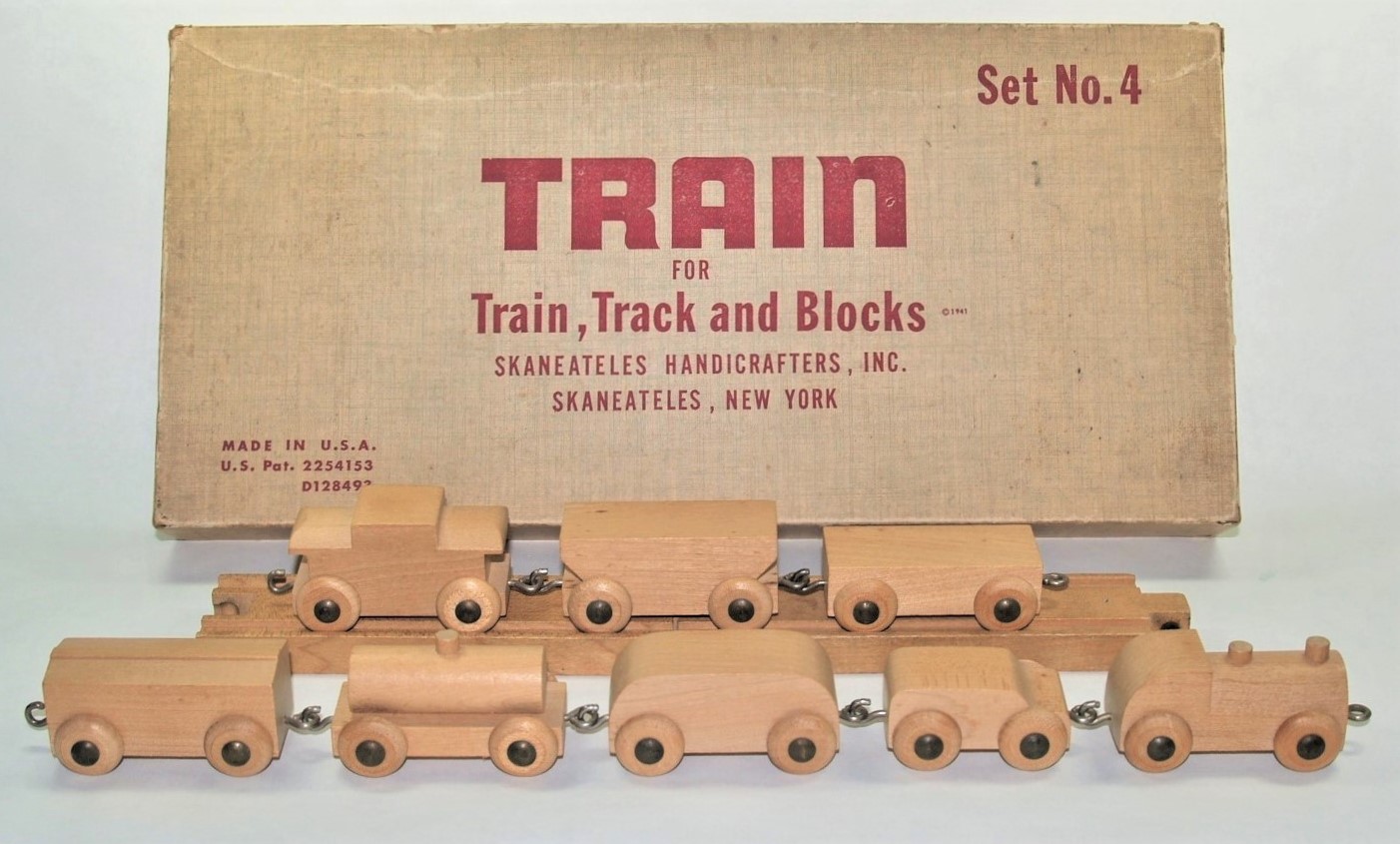 Skaneateles Train Set
Skaneateles Train Set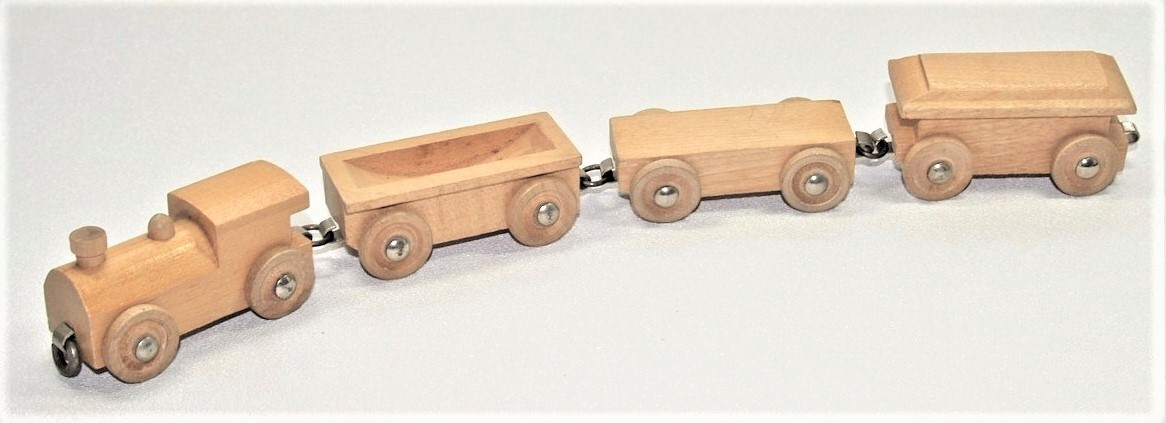 Keystone Train Set
Keystone Train Set Micki Train Set
Micki Train SetCollecting Contemporary Trains
Presently, I see no clear indication that contemporary wooden track trains have much collector attention, aside from newly-manufactured examples of the Thomas & Friends and BRIO lines. The only notable exceptions are the Maxim Enterprise/Lionel wooden train collaboration of 2006/07 or the sets families keep as souvenirs from their train journeys or personally experienced events. However, several companies that have entered the marketplace in more recent years are deserving of recognition including LaLok (Austria), Hape (Germany), BigJigs (UK) and KidKraft (US). These trains generally occupy the more “economical” segment of the market. As such, they usually get comingled into existing layouts and soldier on anonymously until ultimately ending up at local garage sales, donated to charities or worse … making that final journey into a landfill. In the future, these contemporary trains could invoke just as strong of an emotional nostalgic feeling as their more famous brethren, but relatively few will likely survive. I am delighted to include some examples of these in my personal collection.
Gallery of contemporary train sets:

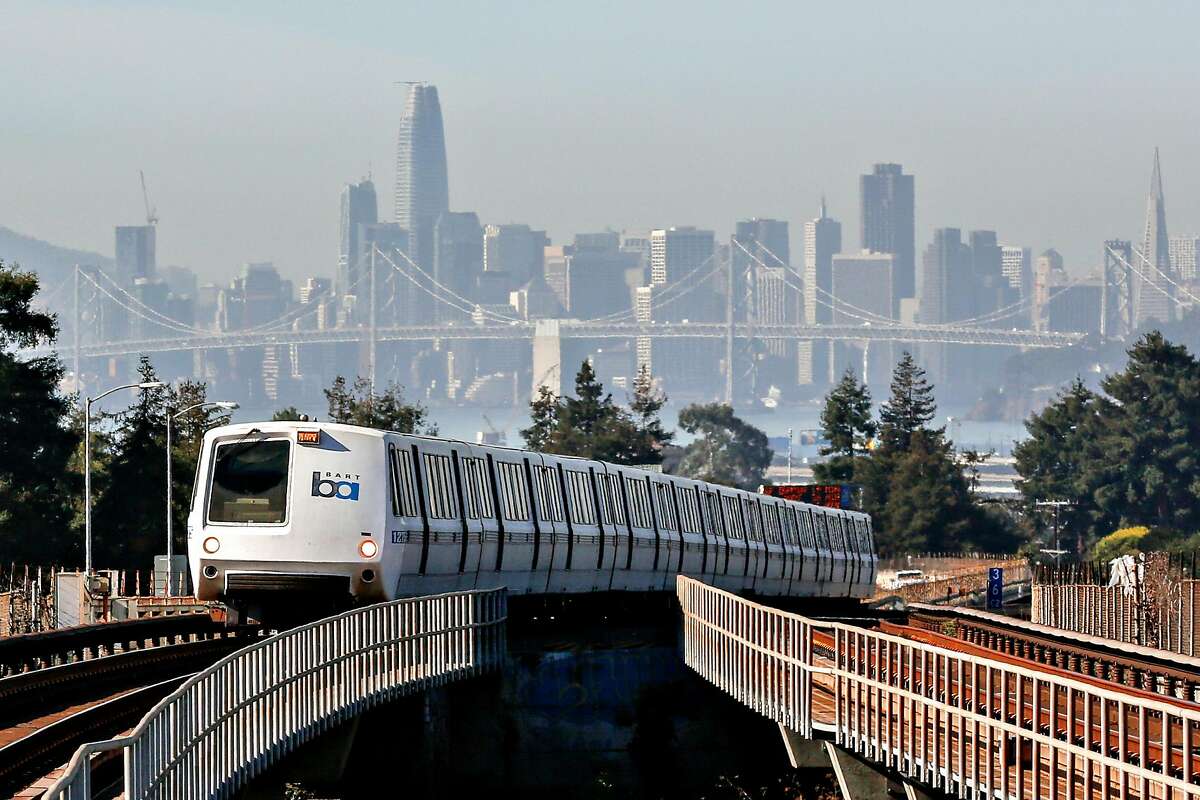 BART Train - the prototype
BART Train - the prototype KidKraft-ACE
KidKraft-ACE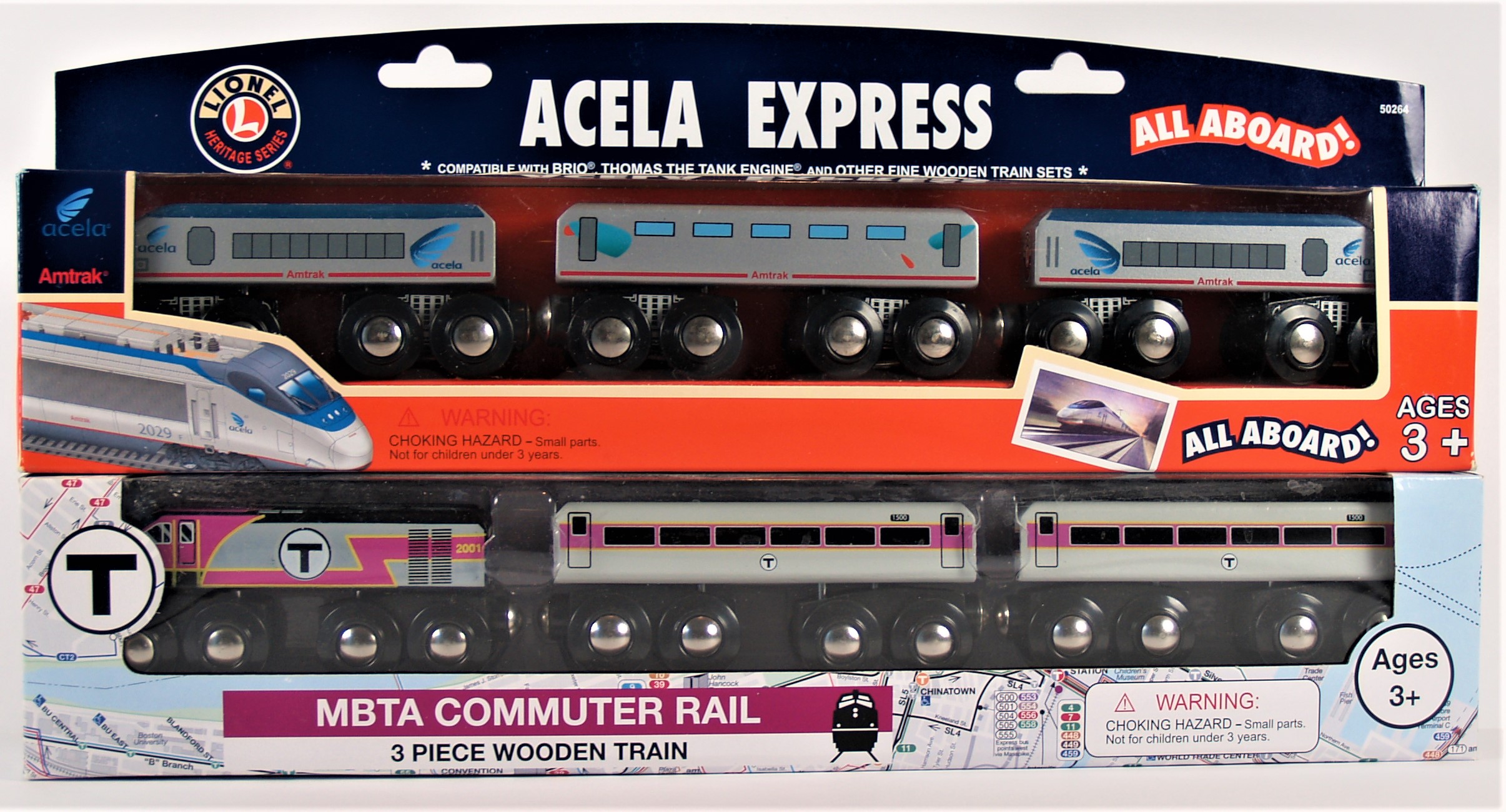 Maxim Acela
Maxim AcelaLINKS:
Museum Flyer - Peek Preview to What's in the Museum
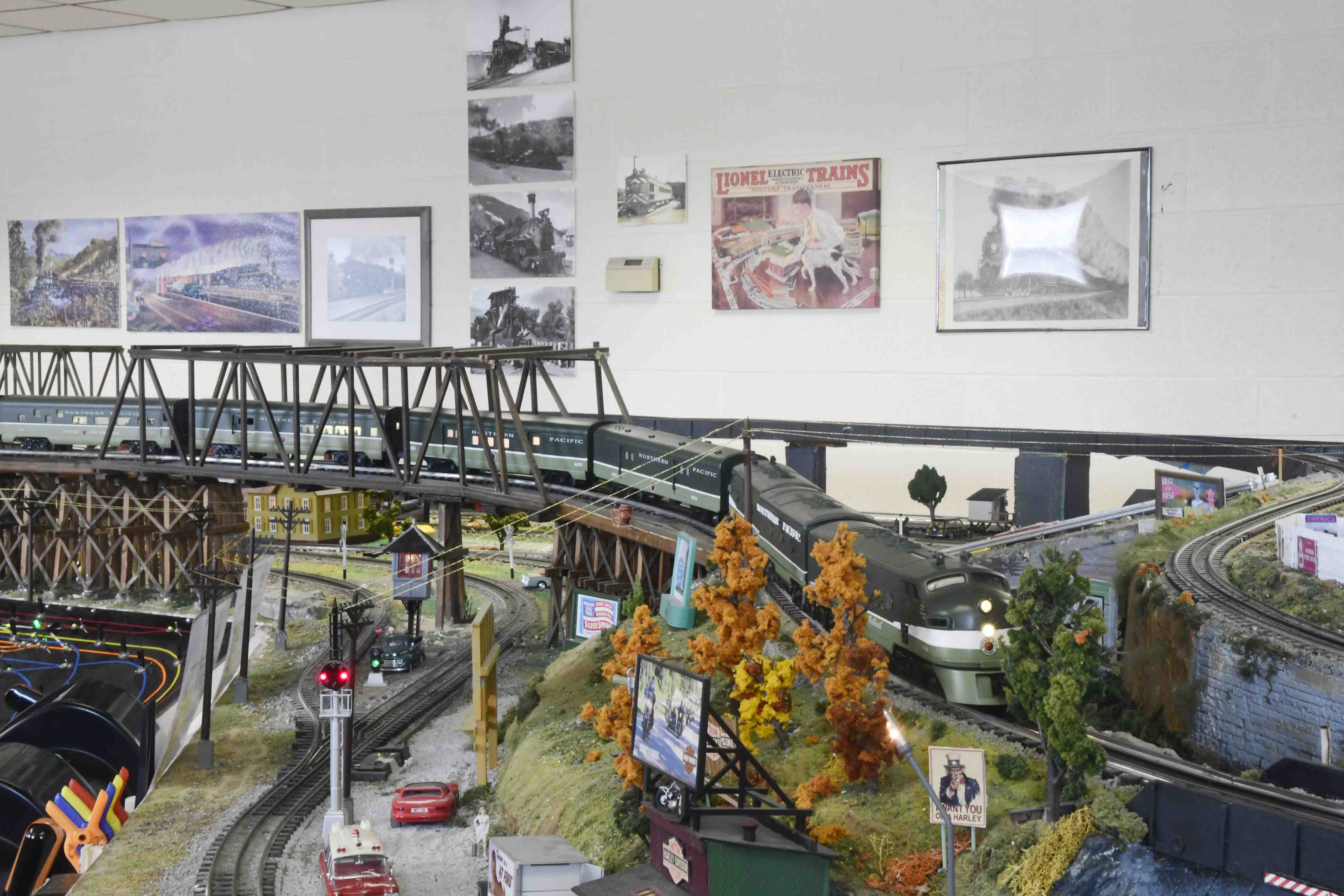
https://acrobat.adobe.com/id/urn:aaid:sc:us:ad310752-cfea-457e-aa12-204f619a5f41
How to Wire Your Model Railroad
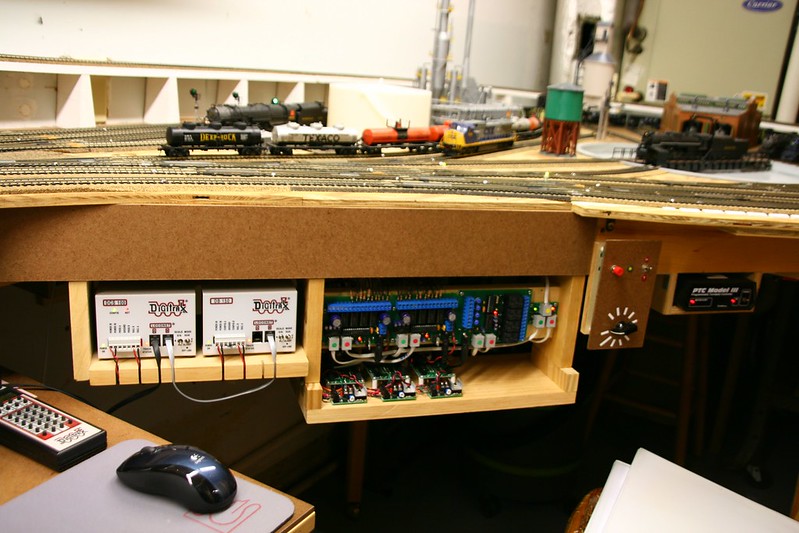
https://www.building-your-model-railroad.com/model-railroad-wiring.html
The Local - Newsletter for the Mid-Eastern Region
https://acrobat.adobe.com/id/urn:aaid:sc:US:16318d01-3ce2-484b-8b88-6a2f8a4b1b69
Video of the Month - Lehigh and Keystone Valley Railroad
Model Railroad Train Show in Virginia Beach
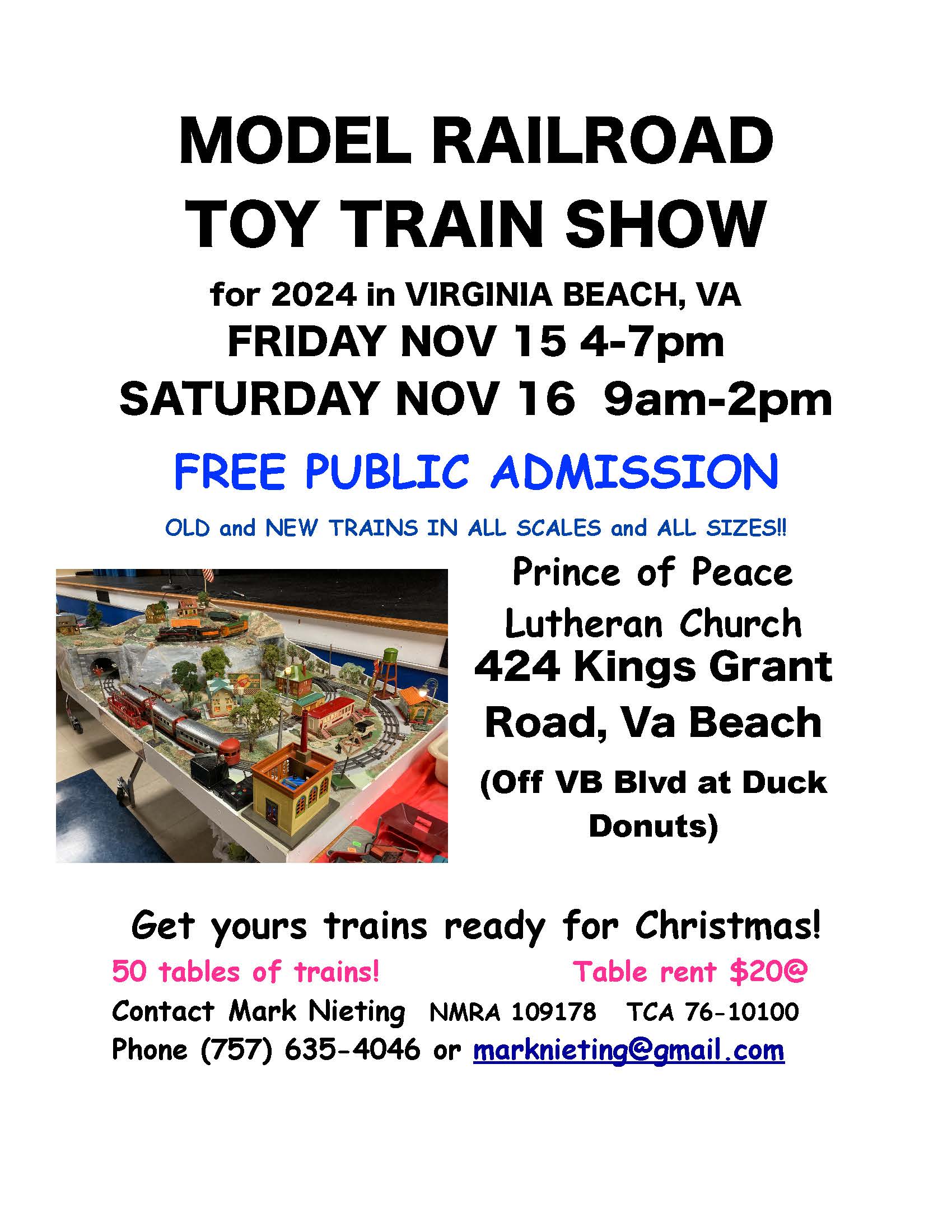
Thanks for reading "Making Tracks." Don't forget your monthly donation!
Happy Railroading!
MRMHR Team

Share this site on your favorite Social Media page!
Recent Articles
-
Making Tracks April 2025
Apr 05, 25 11:10 AM
Official newsletter of the Model Railroad Museum of Hampton Roads containing news and updates about the museum and other stories of interest. -
Gift Shop
Mar 23, 25 08:19 AM
Want to buy a gift for a special person, We sell model trains and railroad-related gift items. We can order almost anything for you if it's available -
Model Railroad Advertising
Mar 03, 25 09:15 AM
Here is you chance to advertise your business to a selected audience of those who are truly interested in the hobby.
The Model Railroad Museum of Hampton Roads will be a fantastic community center based on running, operating and even building your own model railroads! There's something for every age here.
Learn about the real history of this area and how important it was in the building of America. Watch how railroads were built, the people involved, where America's roots were formed.
As they build their own railroads, students will be learning about science, electronics, architecture, technology, engineering, mathematics, and the art of 3 dimensional model landscaping. They can earn rewards for completing projects and winning contests.
Try to solve yardmaster problems on a switching layout like getting the lumber from the forest to the furniture store, by way of the saw mill and the lumber yard.
Run your train around blockades and other trains to get to the station on time without speeding or crashing.
Play railroad monopoly using model railroads. Winner is the one who can collect the most cars into his yard within an hour.
There will be programs for autistic and special needs kids, disabled adults and veterans.
School tours. Holiday Shows. Library and video rooms. Scouts are welcome. Even youngsters will have their own wooden models to enjoy. Classrooms and hands-on clinics for adults. Learn how to get started in the hobby. Or just enjoy the fun.
Everybody loves trains and this will prove it! Just click on the either the blue or the yellow DONATE button below to make it happen...
PayPal Giving Fund:
No Credit Card Fees
OR...
Charitable Donations through PayPal, Credit or Debit cards:
(Opt in or out of paying credit card fees)
Get Updates and Special Offers in
the MRMHR Newsletter:
Making Tracks
Sign Up Here...
The official newsletter for the Model Railroad Museum of Hampton Roads


